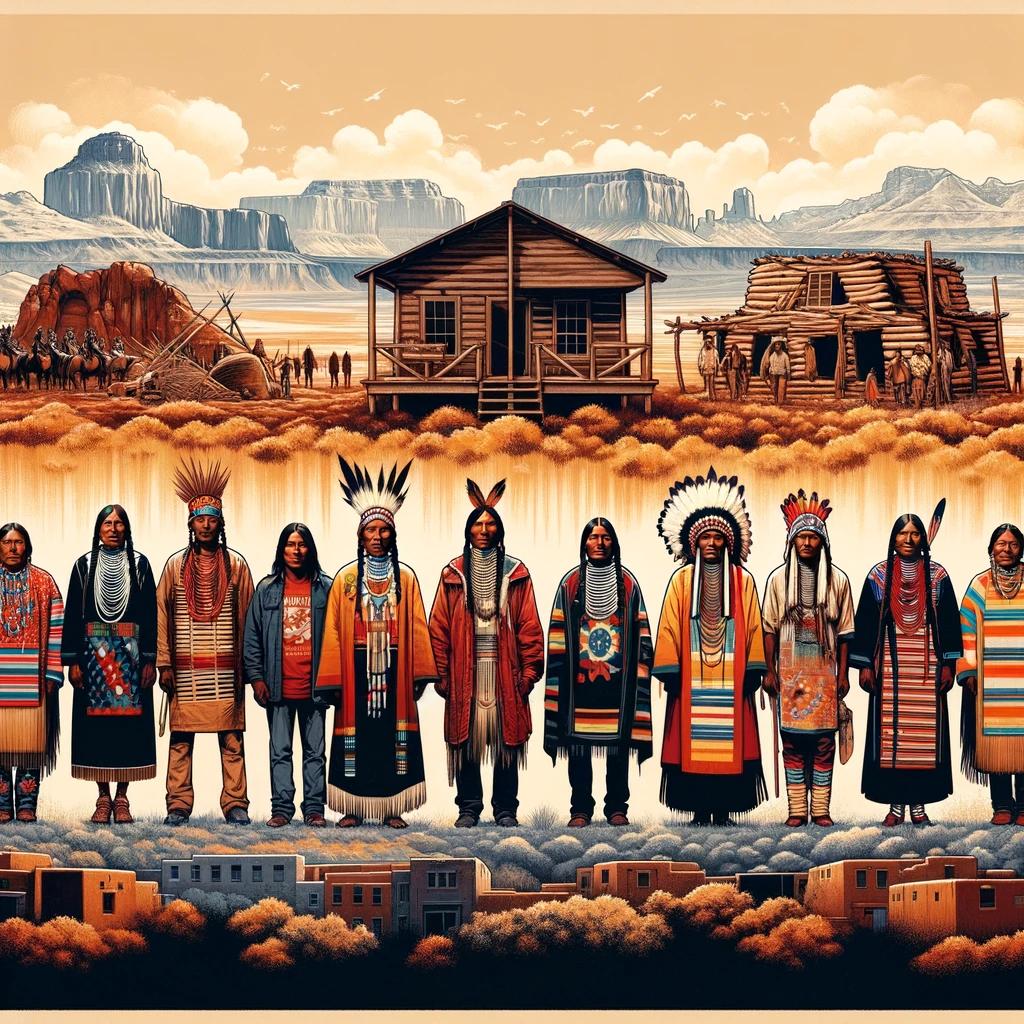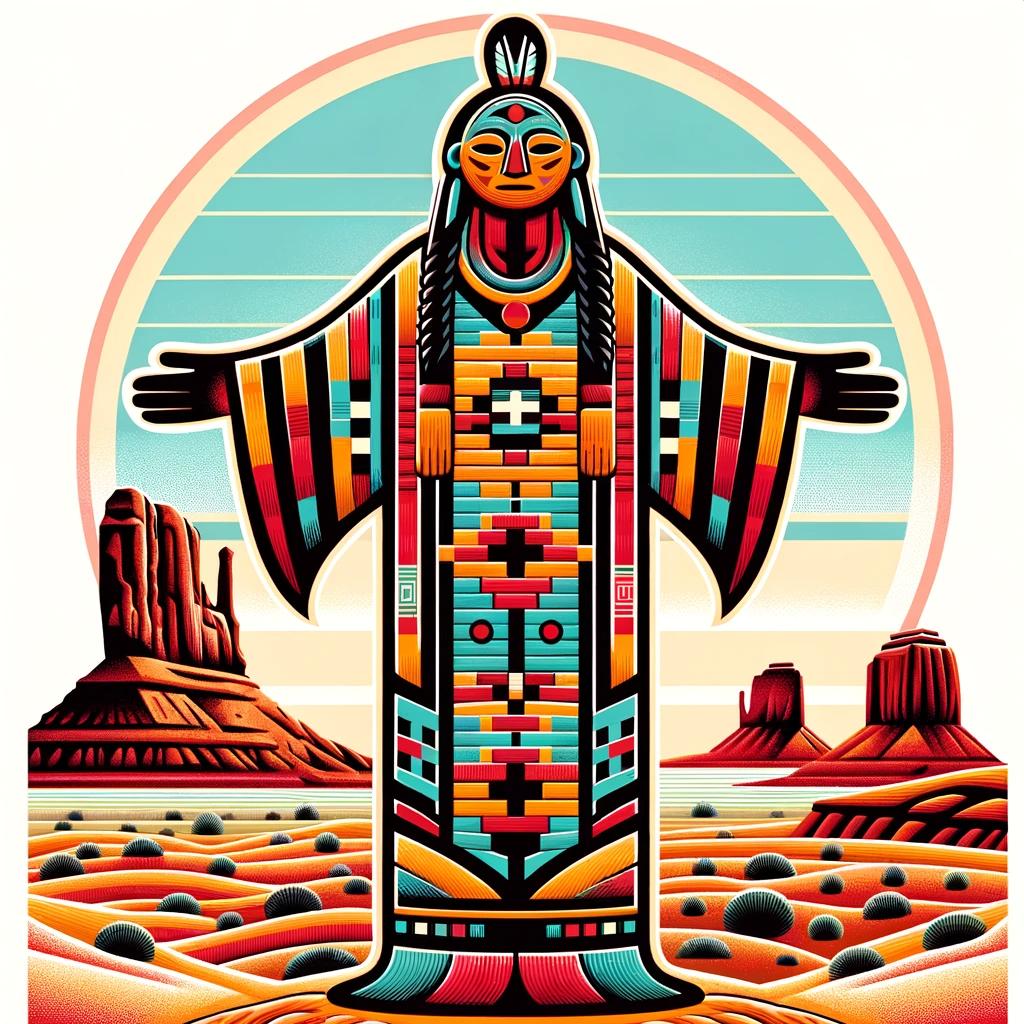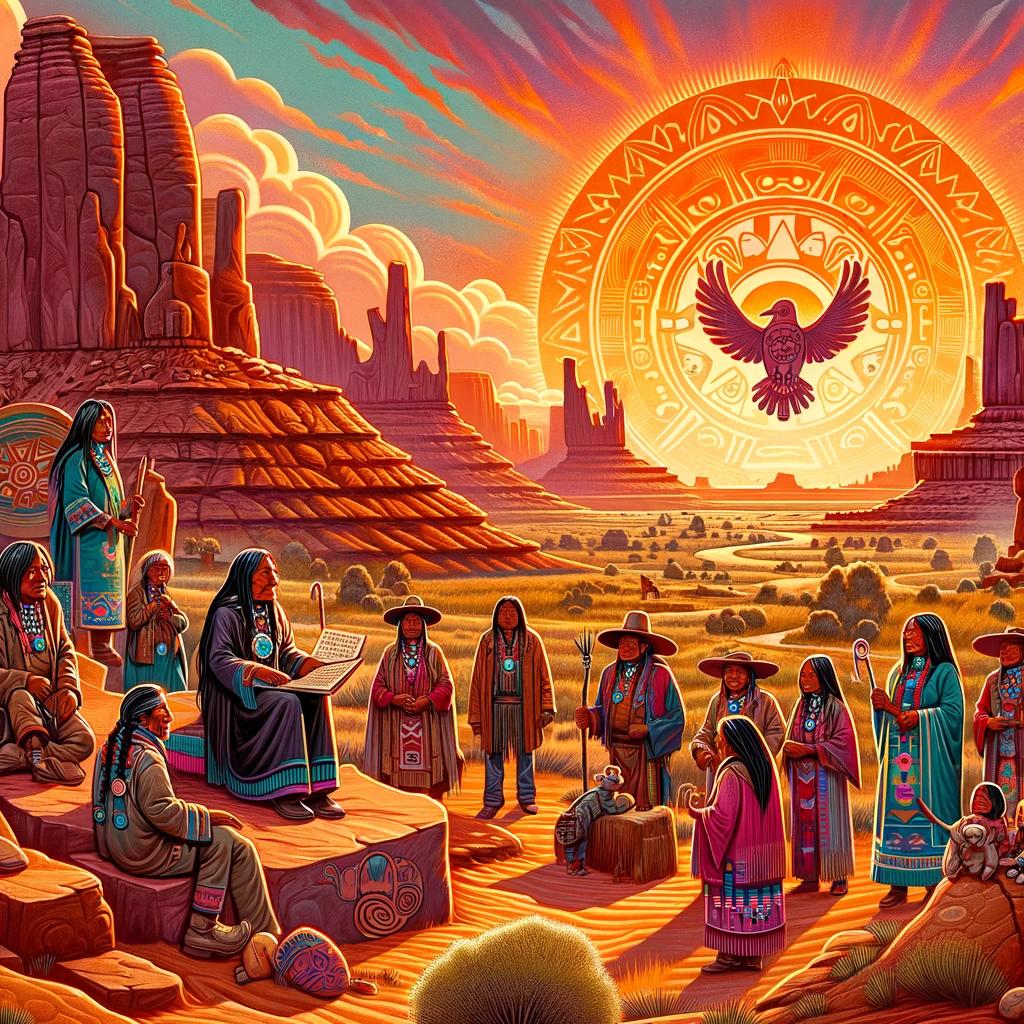How are the Apache and Navajo Different: A Comparative Analysis of Southwest Native Tribes

The Apache and Navajo tribes, closely related indigenous groups in the southwestern United States, have distinct differences in various aspects. Both tribes share a common origin traced back to a migration from Canada around 1500.
Over time, their experiences and environments led to separate identities. The Navajo embraced a more sedentary lifestyle, engaging in agriculture and sheep rearing, influenced by neighboring indigenous communities and Spanish settlers.
In contrast, the Apache maintained a hunter-gatherer way of life, conducting stealthy raids for livestock and sustenance instead of battling. These differences extended to gender roles, housing preferences, social organization, and leadership selection.
Historical Background of the Apache and Navajo Tribes
The Apache and Navajo tribes have a shared historical background that traces back to their migration from Canada to the southwestern region of the United States. This migration, which occurred around the year 1500, resulted in the separation of these tribes and the development of distinct cultural identities.
Migration from Canada to the Southwest
The Apache and Navajo, originally part of a single group, embarked on a journey from Canada to the Southwest in search of new lands and resources. This migration took place over hundreds of years and shaped their subsequent histories and interactions with other indigenous groups and European colonizers.
Cultural and Environmental Factors Leading to Differentiation
As the Apache and Navajo settled in the Southwest, they encountered different environments and cultural influences that contributed to their differentiation. The Navajo, for instance, embraced a more sedentary lifestyle, engaging in agriculture and sheep herding, influenced by neighboring indigenous communities and the Spanish settlers.
In contrast, the Apache maintained their hunter-gatherer lifestyle, relying on stealthy raids for survival.
This divergence in lifestyle was further influenced by the surrounding natural landscapes and resources available to each tribe.
The Navajo found fertile lands suitable for agriculture, while the Apache inhabited territories that necessitated a nomadic existence. These cultural and environmental factors played a crucial role in shaping the distinct identities of the Apache and Navajo tribes.
Lifestyle and Occupation Differences
Sedentary Life and Agriculture among the Navajo
The Navajo, also known as Diné, established a more sedentary lifestyle compared to the Apache. Settling in what is now northwest New Mexico and adjacent areas of Colorado, the Navajo embraced agricultural practices and sheep rearing introduced by the Spanish.
They learned farming techniques and weaving from neighboring indigenous communities and adopted certain cultural aspects from the Spanish colonizers. The Navajo people settled in a traditional region called Dinétah, encompassed by four sacred mountains representing the cardinal directions.
Hunter-Gatherer Lifestyle of the Apache
The Apache, on the other hand, opted for a hunter-gatherer lifestyle and ventured further south and east. Renowned for their stealthy raids on Pueblo tribes, Spanish colonizers, and American settlers, the Apache primarily sought after livestock and food rather than engaging in direct battles.
While some Apache groups eventually adopted a more settled way of life and began cultivating indigenous crops, similar to the Navajo, others, such as the Chiricahua and Mescalero, continued to rely heavily on hunting and gathering.
The Apache and Navajo tribes’ differing lifestyles and occupations stemmed from the specific environmental conditions, available resources, and cultural interactions they experienced over time. The Navajo transitioned into an agrarian society influenced by neighboring indigenous communities and Spanish settlers, while the Apache maintained their hunter-gatherer traditions.
These distinctions defined their respective cultures and contributed to their unique identities as tribes in the Southwest region of the United States in 2023.
Cultural Differences and Influences
In exploring the cultural differences between the Apache and Navajo tribes, it becomes evident that they have distinct influences shaping their identities. These differences are reflected in various aspects of their traditions, practices, and adaptations.
Navajo Cultural Adaptations from Indigenous Peoples and the Spanish
The Navajo, known as Diné, have a rich history of cultural adaptations that have contributed to their unique identity. Through interactions with neighboring indigenous communities, they acquired knowledge of agriculture and weaving techniques.
This exchange of ideas allowed the Navajo to cultivate crops and raise sheep in a sedentary lifestyle introduced by the Spanish settlers. They embraced elements of indigenous cultures and incorporated Spanish-influenced aspects, such as the introduction of sheep and the use of silverwork in their craftsmanship.
Apache Cultural Traditions and Lack of Sedentarism
On the other hand, the Apache maintained a distinct cultural tradition centered around a hunter-gatherer lifestyle. Rather than adopting sedentary practices, they continued to rely on hunting, gathering, and trading with neighboring tribes.
The Apache tribes, including the Chiricahua and Mescalero, resisted the agricultural practices embraced by the Navajo. They valued their independence and mobility, which allowed them to adapt to different environmental conditions and efficiently navigate the vast territories they inhabited.
Unlike the Navajo, the Apache tribes did not adopt significant aspects of Spanish culture. They remained true to their cultural heritage, maintaining their unique traditions, ceremonies, and social structures.
These cultural differences between the Apache and Navajo have played a vital role in shaping their distinct identities.
While the Navajo assimilated various cultural influences, especially from neighboring tribes and the Spanish, the Apache tribes retained their traditional practices and preserved their distinctive way of life.
Gender Roles and Social Organization
Gender roles differed among the Apache and Navajo tribes, highlighting unique aspects of their social organization.
Women’s Responsibilities among the Apache and Navajo
Within Apache society, women played significant roles in various domestic tasks and responsibilities. They were responsible for child-rearing, gathering and processing food, producing clothing, and constructing homes. Apache women possessed crucial knowledge and skills essential for the survival of their families and communities.
Their contributions were highly valued and respected.
In contrast, the Navajo assigned the construction of homes as a predominantly male task. Navajo women were active participants in agricultural activities, alongside being primary caregivers and responsible for food processing.
They cultivated crops, tended livestock, and engaged in textile production. Their multifaceted roles reflected the significance of women in sustaining Navajo communities.
Social Structure: Bands vs. Tees
The Apache social structure was organized into smaller units known as bands consisting of 20 to 30 individuals. These bands operated as kinship groups where members lived and worked together. Each band had its own leadership, elected based on their wisdom and past achievements.
Conversely, the Navajo’s social organization revolved around a system called tees, which comprised neighboring extended families cooperating in various aspects of community life. They worked together in managing grazing areas, water usage, and addressing common challenges.
Leadership among the Navajo was also determined through wisdom and prior successes.
Overall, the gender roles and social organizations of the Apache and Navajo tribes reflected their unique cultural values and historical contexts.
The Apache acknowledged the essential contributions of women to their society, while the Navajo fostered cooperation among extended families to ensure their community’s well-being.
Housing and Settlement Patterns
When examining the housing and settlement patterns of the Apache and Navajo tribes, notable distinctions emerge in their architectural styles and preferred dwellings. These differences reflect their unique cultural backgrounds and lifestyles.
Hogan Dwellings of the Navajo
The Navajo people, also known as Diné, traditionally constructed hogan dwellings. Hogans are circular structures made of logs or stone with a dome-shaped roof. The walls of hogans were ingeniously crafted using wooden poles intertwined with branches and then covered with layers of mud.
This construction technique provided excellent insulation and ventilation, ensuring their comfort in the harsh desert climate of the region. The doorway of the hogan, known as the “Sikisoh,” faced east, symbolizing the orientation towards the rising sun, which holds great significance in Navajo culture.
The hogan served as a multipurpose space, offering shelter and a spiritual connection to the natural world. The interior layout typically consisted of a central fire pit, serving as both a heat source and a ceremonial focal point.
Surrounding the fire pit were living and sleeping areas, often separated by curtains or partitions. Traditionally, hogans were considered temporary structures, as the Navajo people valued mobility and frequently moved to different locations in their search for resources.
Wickiups and Teepees of the Apache
The Apache, in contrast to the Navajo, favored different types of dwellings suited to their nomadic lifestyle. The Apache constructed wickiups and utilized teepees, which were portable and allowed for easy dismantling and relocation.
Wickiups were small, dome-shaped structures made with a framework of poles covered by various available materials, such as brush, grass, or animal hides. These dwellings were relatively easy to construct, providing temporary shelter during hunting and gathering trips.
Wickiups were especially suitable for the Apache’s hunter-gatherer lifestyle, as they required minimal effort to build and dismantle when on the move.
Additionally, the Apache also utilized teepees, which are more commonly associated with Plains tribes.
Teepees were conical tents made of animal hides stretched over a framework of poles. They offered the advantage of convenient assembly and disassembly, enabling the Apache to adapt to changing environments swiftly.
- The Navajo constructed hogans, circular structures made of logs or stone, providing excellent insulation and ventilation.
- The Apache utilized wickiups and teepees, light and portable dwellings suitable for their nomadic lifestyle.
These different types of dwellings reflected the Apache and Navajo’s distinct approaches to housing and settlement, with the Navajo valuing stability and permanence while the Apache prioritized flexibility and mobility.
Leadership and Governance
Leadership and governance played significant roles in both the Apache and Navajo tribes, albeit with distinct differences in their respective systems. Understanding the leadership structures provides valuable insights into the organization and decision-making processes of these Native American communities.
Apache Band Leadership
Among the Apache, band leadership held crucial importance. Each band consisted of approximately 20 to 30 individuals who lived and worked together as an extended family unit. Leadership within the band was typically earned through wisdom, past successes, and acts of bravery.
The role of the Apache band leader encompassed various responsibilities. They guided the group in matters of hunting, gathering, and strategic decision-making. With their expertise in survival skills and intimate knowledge of the local environment, band leaders determined the movement of the group, ensuring the well-being and sustainability of their members.
This decentralization of leadership allowed for flexibility and adaptability in response to challenging circumstances.
Navajo Tee Family Cooperation and Leadership Selection
On the other hand, the Navajo adopted a different approach to governance through a system of cooperation within tee families. Tee families were extended family units that cooperated in various aspects of life, including resource management, migration, and defense.
Leadership selection within Navajo tee families was based on a combination of wisdom, experience, and respect within the community. The leaders were individuals who demonstrated exceptional decision-making skills, mediation abilities, and knowledge of Navajo traditions and customs.
This cooperative leadership structure created a sense of communal unity and a collective decision-making process. Leaders within tee families worked together to address challenges, resolve conflicts, and ensure the well-being of their members.
In summary, the Apache and Navajo tribes employed distinct leadership and governance systems. The Apache relied on band leaders chosen for their wisdom and achievements, leading small groups in a decentralized manner.
Meanwhile, the Navajo placed importance on cooperation within tee families, with leaders selected based on their experience and respect within the community. Understanding these differences illuminates the diverse cultural structures and decision-making processes of the Apache and Navajo tribes.
.




















